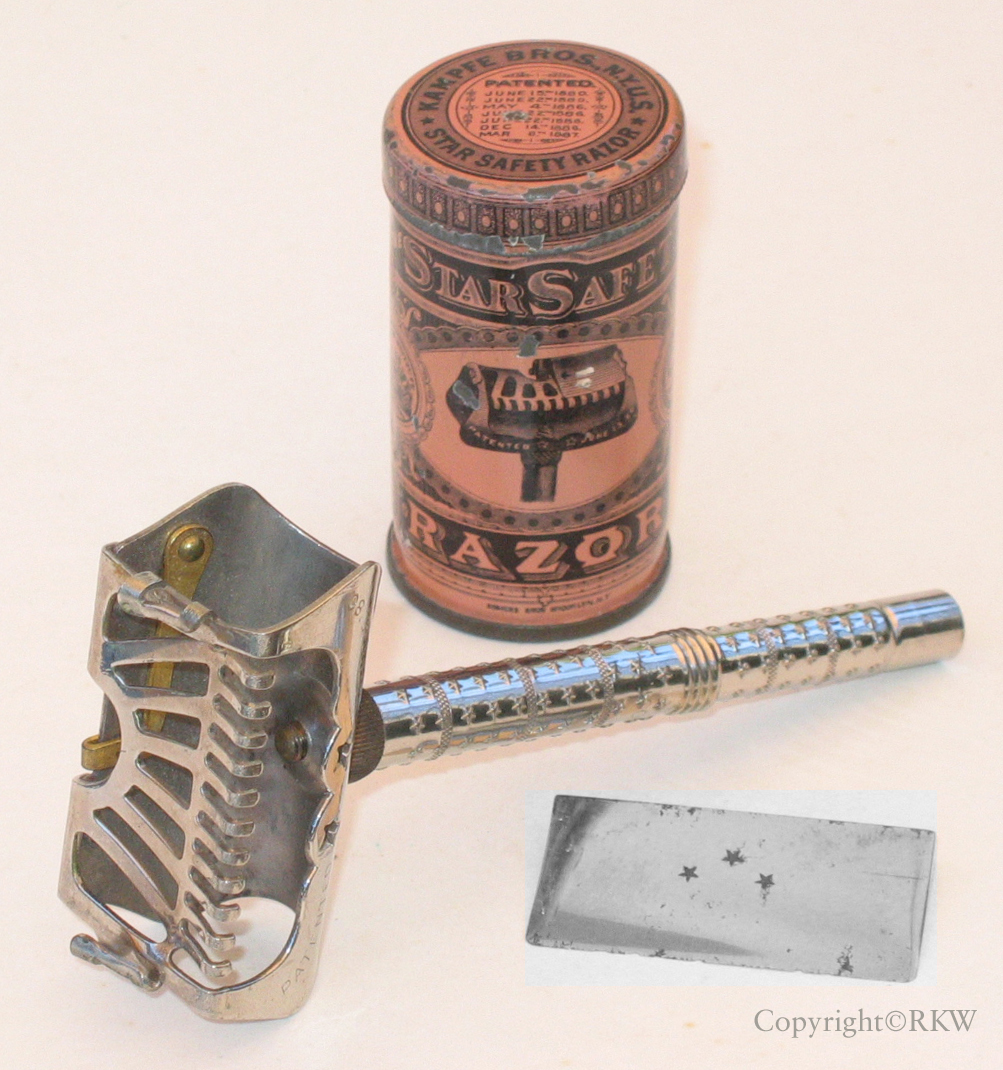|
Oliver Wendell
Holmes, Sr. (1809-1894).
From a memorial postcard

1899 Kampfe advertisement.
|
.
The
Star razor was very successful. In March 1887 Oliver Wendell
Holmes Sr. described a very useful bon voyage gift in an article
in Atlantic magazine
(later republished as a book “Our
One Hundred Days in
Europe”):
“This
little affair had a blade only an inch and a half long by three
quarters of an inch wide. It had a long slender handle, which took
apart for packing, and was put together with the greatest ease. It was,
in short, a lawn-mower for the masculine growth of which the proprietor
wishes to rid his countenance. The mowing operation required no glass,
could be performed with almost reckless boldness, as one cannot cut
himself, and in fact had become a pleasant amusement instead of an
irksome task. I have never used any other means of shaving from that
day to this. I was so pleased with it that I exhibited it to the
distinguished tonsors of Burlington Arcade, half afraid that they would
assassinate me for bringing in an innovation which bid fair to destroy
their business. ... I determined to let other persons know what a
convenience I had found the "Star Razor" of Messrs. Kampf [sic], of
Brooklyn, New York, without fear of reproach for so doing. ... It is
pure good-will to my race which leads me to commend the Star Razor to
all who travel by land or by sea, as well as to all who stay at
home.”
Holmes' namesake son became famous as a
Justice of the Supreme Court, and
for years
after O. W. Holmes Sr. had died, Kampfe ads proclaimed
“Recommended by
Oliver Wendell Holmes.”
Even before
the first Kampfe patent expired in 1897 the Star razor was widely
copied and sold
in
the U.S. and abroad – often labeled American Model. At that point
Kampfe Brothers began to advertise more frequently, often including the
statement "All Others are
Spurious." They broadened their
product line to include a variety of cased sets containing up to
seven blades, razors with fancy
handles such as rosewood or ivory, stropping devices, and shaving
accessories.
The Star blade still required stropping prior to
each use and occasional skillful honing. This spawned many patents on
stropping and honing devices. The
Kampfe brothers ultimately acquired over 50 patents on razors and
stropping
devices and "automatic" stroppers were included in their high-end razor
sets. Over the years
the Kampfe Brothers produced over 25 design variations of the Star
wedge-blade safety razor.
Competitors were encouraged by the success of the
Star.
Between 1880 and 1901, over 80 safety razor patents were issued in the
U.S. alone. Gillette's
1904 patent
inspired an even greater
explosion of safety razor creativity, but that is
another, and much
longer, story.
|

























